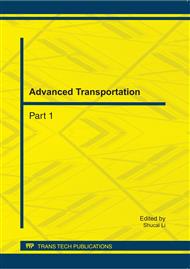p.10
p.17
p.23
p.28
p.32
p.36
p.40
p.45
p.49
Contrast Study on Prediction Models of the Post-Construction Settlement of Embankment in Saline Soil Area
Abstract:
Post-construction settlement is one of the main issues in high grade railway construction in saline areas. The efective solution to the problem is to find the post-construction settlement law for the guidance to the design and construction based on the field monitored data. After analyzing the large quantities of monitored data from the second double line of Lanzhou-Xinjiang Railway in saline areas, a new model is put forward. The standard hyperbolic model, the modified hyperbolic model and exponential model were applied to the forecasting settlements based on the same monitored data to test the presented new model. By comparing fitting, forecasting accuracy and stability of different methods, show that the new model has a high prediction accuracy and good stability, and the forecasting data agree well with the monitored data. The new model presents a new method for analysis and prediction of settlement, and it is found to be a good reference to post-construction settlement of embankment in saline areas.
Info:
Periodical:
Pages:
32-35
Citation:
Online since:
September 2011
Authors:
Price:
Сopyright:
© 2011 Trans Tech Publications Ltd. All Rights Reserved
Share:
Citation:


